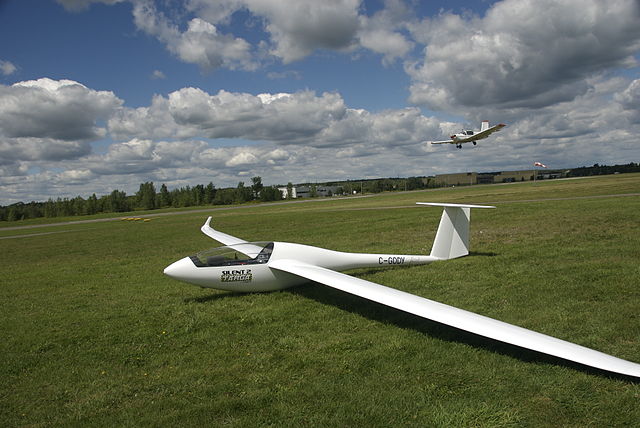 Modern gliders, often known as sailplanes, are highly sophisticated aerodynamic machines. Many carry two people, freeing the second person to concentrate on aerial photography if necessary. The two people are sealed in a large bubble canopy that is not ideal for photographic purposes, but outstanding images can nevertheless be obtained.
Modern gliders, often known as sailplanes, are highly sophisticated aerodynamic machines. Many carry two people, freeing the second person to concentrate on aerial photography if necessary. The two people are sealed in a large bubble canopy that is not ideal for photographic purposes, but outstanding images can nevertheless be obtained.
One of the limitations of gliders is that the aircraft must be towed in to the air by a powered aircraft. Once released from its tow-line, the flying time and route back to a safe landing on a suitable airstrip is determined by atmospheric conditions and the skill of the pilot. Sometimes the sailplane catches a thermal and may rise thousands of feet above the height at which it was released, but on other occasions it may just make a gradual descent to the landing area.
 Most photographs taken from sailplanes show an oblique view of the world as seen from within a curved plexiglass canopy. The photographer is unable to see in a downwards direction unless the craft is put into a steep turn or even inverted. A high wing is obviously an advantage in this respect. Interesting images can be obtained by using a relatively wide-angle lens to capture the interior of the cockpit as well as the exterior view. This adds perspective and allows the viewer to see that the environment in which the image was captured. Other gliders in flight also make interesting subjects.
Most photographs taken from sailplanes show an oblique view of the world as seen from within a curved plexiglass canopy. The photographer is unable to see in a downwards direction unless the craft is put into a steep turn or even inverted. A high wing is obviously an advantage in this respect. Interesting images can be obtained by using a relatively wide-angle lens to capture the interior of the cockpit as well as the exterior view. This adds perspective and allows the viewer to see that the environment in which the image was captured. Other gliders in flight also make interesting subjects.
Another option sometimes available is to attach a camera to a special compartment in the nose or body of the aircraft so that downward or forward looking images can be created by appropriately positioning the sailplane.






